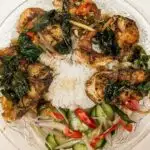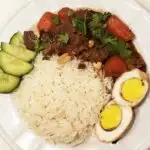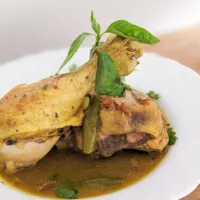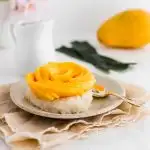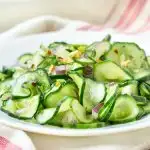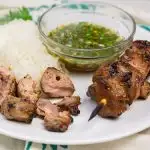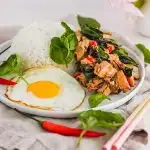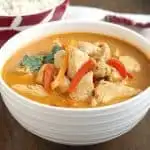If you’ve ever wondered what is authentic Thai food – what Thai people really eat – you’re in the right place. Come along with our writer Oz as he dives into authentic Thai cuisine from his experiences traveling in the country.
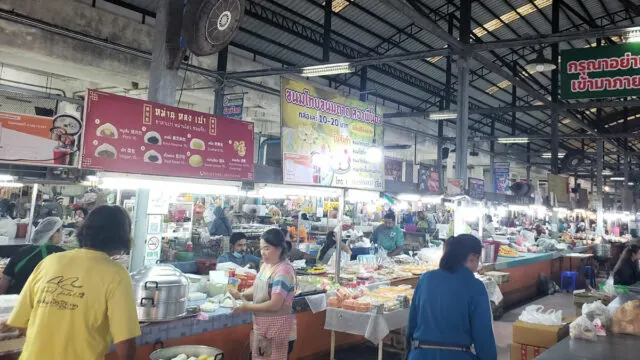
Thai cuisine has many faces, and it comes in various forms. Noodle soups, stir-fries, spicy salads, and sticky rice desserts, just to name a few.
Boat noodles, a Thai-Chinese noodle soup dish, is based on a hearty broth, simmered for hours. It is served with noodles of choice and varying forms of toppings, such as sliced meat, fish balls, wontons, etc.
Khao Moo Krob (rice with crispy pork belly) is another beloved delicacy in Thailand. The crispy pork requires days of preparation – pierced pork belly has to be marinated, blanched, sundried, and fried properly before being served.
However, the preparation of such dishes is time-consuming, elaborate, and requires years of experience, as well as special equipment.
So, what do Thai people actually cook at home? What dishes form a traditional Thai meal? What is the dining setting?
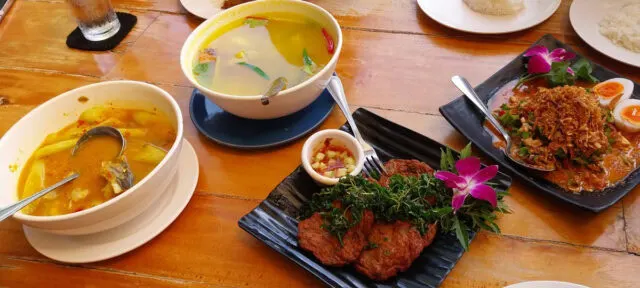
A traditional Thai meal
Like most Southeast Asian countries, the main staple in Thailand is rice. Actually, in the Thai language, the phrase “eating rice” (gin khao) means ‘having a meal”. Any meal, and even dessert!
While in Western gastronomy rice is often considered a side dish, a typical Thai meal is based on a portion of warm, steamed rice. It is accompanied by a variety of curries, soups, salads, stir-fried dishes, and spicy relishes.
Traditionally, the “accompanying” dishes are prepared in advance, usually in the morning, and are enjoyed an room temperature (the rice must be served hot, though).
Nevertheless, as Thai culture modernized, dining out of the home became a daily affair, as many people suddenly didn’t have time to cook before leaving for work or school in the morning. And the prices of such meals have become relatively affordable.
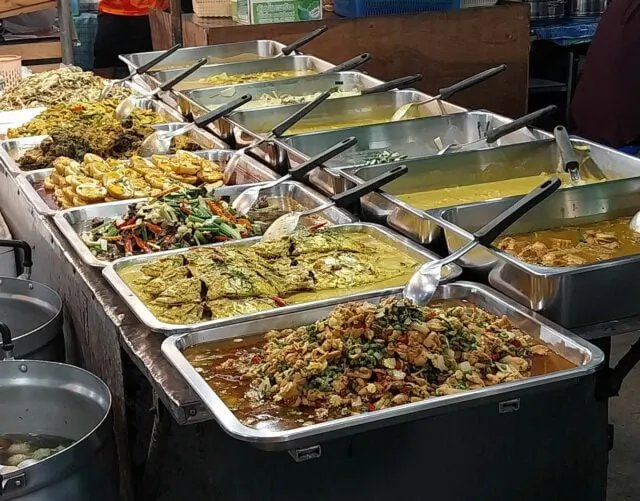
Khao Gaeng – Just like home
Khao Gaeng are one of the most popular casual dining style restaurants in the country. Literally meaning “Curry-Rice”, Khao Gaeng restaurants are typically managed by local families, serving homecooked-style dishes with rice – just like at home.
While traveling in Thailand, I would always enjoy visiting local Khao Gaeng shops. The dishes vary by region, community, and chef, and one Khao Gaeng would never be like another.
A trip to Southern Thailand
When I visited Krabi Town in Southern Thailand, I happened to find a lovely Khao Gaeng shop at one of the local markets. I quickly became a regular and befriended the chef, a lovely Thai Muslim lady.
She treated me like her son, always making sure that I was comfortable and nourished.
To this day, I don’t know her name, as she insisted on me calling her ‘Mae‘, ‘Mom’.
Occasionally, she would show me pictures of her daughter and ask me if I had a girlfriend. As a joke, she even started to address me as her ‘luk koey‘, ‘son-in-law’.
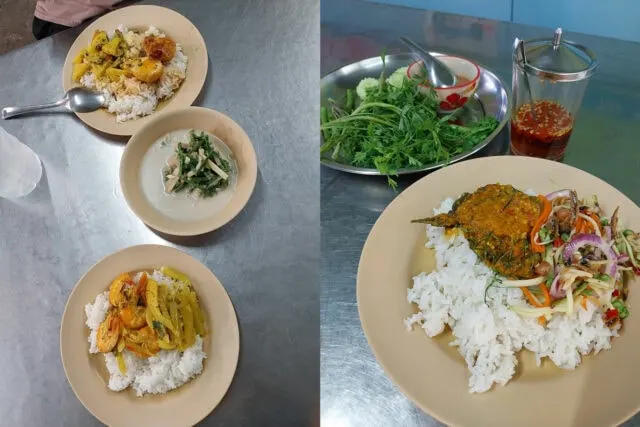
Learning to cook authentic Thai food
A day before I left Krabi Town, I decided to offer Mae some help in the kitchen. I could learn more about the dishes that I loved so much while she could have an extra hand. She was a bit hesitant at first when I asked, saying that her sisters (who join the morning preparations) don’t speak English, and I might feel uncomfortable.
I reassured her, “It’s my chance to practice my Thai with true locals!” I said and smiled. She agreed.
The next morning, I had some of the best experiences of my life.
For four hours, it was just me and the three sisters, each one of them a true master chef. I helped them chop vegetables, simmer curries, and fry fish. While we worked, I made sure to ask Mae about each dish, its ingredients and cooking method. I learned to make curry pastes, coconut milk soups, and stir-fried dishes.
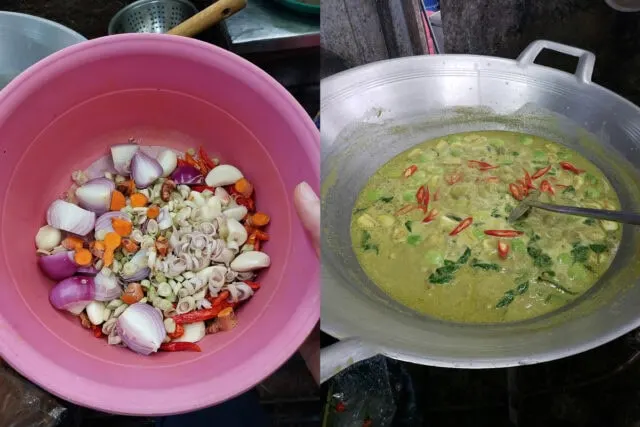
Funnily enough, Mae decided to teach me her recipe for Kai Luk Koey, ‘Son In Law Eggs’ – a dish of fried boiled eggs, served with a thick tamarind sauce and various garnishes.
Another unusual dish that caught my attention was Yum Mamuang, a spicy salad of unripe mangoes. Due to Malay influences on Southern Thai cuisine, they add dried anchovies to the salad. They added a crispy bite and a savory kick.
While I’m grateful for each recipe that Mae taught me, she also managed to share her culinary attitude with me. Through displaying her cooking habits, such as eye-measuring quantities, balancing flavors, and playfulness around the kitchen, Mae portrayed the true spirit of Southern Thai cuisine, in all of its glory.
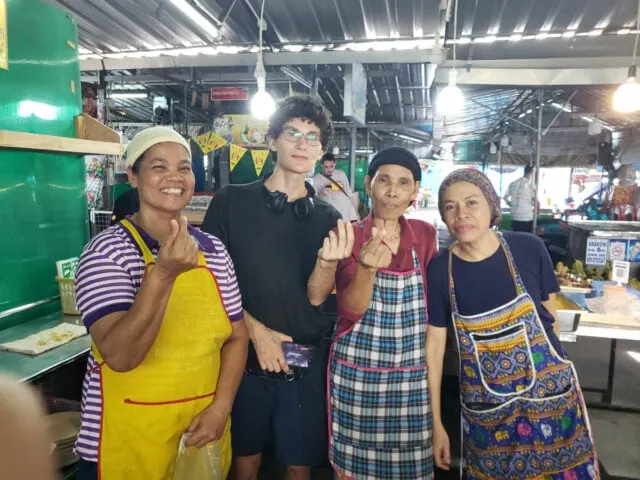
Stay tuned for two recipes from Oz’s trip!
If you liked this recipe, here are some similar dishes you may enjoy!

